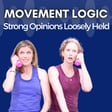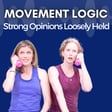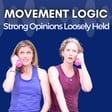
87: 2 Strength Myths Busted
In this in-between episode of the Movement Logic Podcast, Laurel discusses two major myths: the longevity significance of grip strength and the role of single leg exercises in improving balance. The discussion touches on the misinterpretations of grip strength's correlation with health and longevity, different types of grip and their training, and the genetic factors influencing grip strength. It also covers the efficacy of using gloves and straps. Additionally, the episode explores how single leg exercises contribute to overall strength and balance, challenging the notion that these exercises are essential for improving balance and athletic performance.
00:00 Introduction to Mythmas Season
00:47 Debunking the Grip Strength Myth
04:49 Understanding Different Types of Grip
08:54 The Role of Genetics in Grip Strength
17:25 Exploring Single Leg Exercises
22:50 Benefits and Misconceptions of Unilateral Exercises
31:09 Conclusion and Free Mini Course Offer
Grab our Free Mini Course: Barbell 101
Stronger By Science: The Evidence-Based Guide to Grip Strength Training & Forearm Muscle Development


